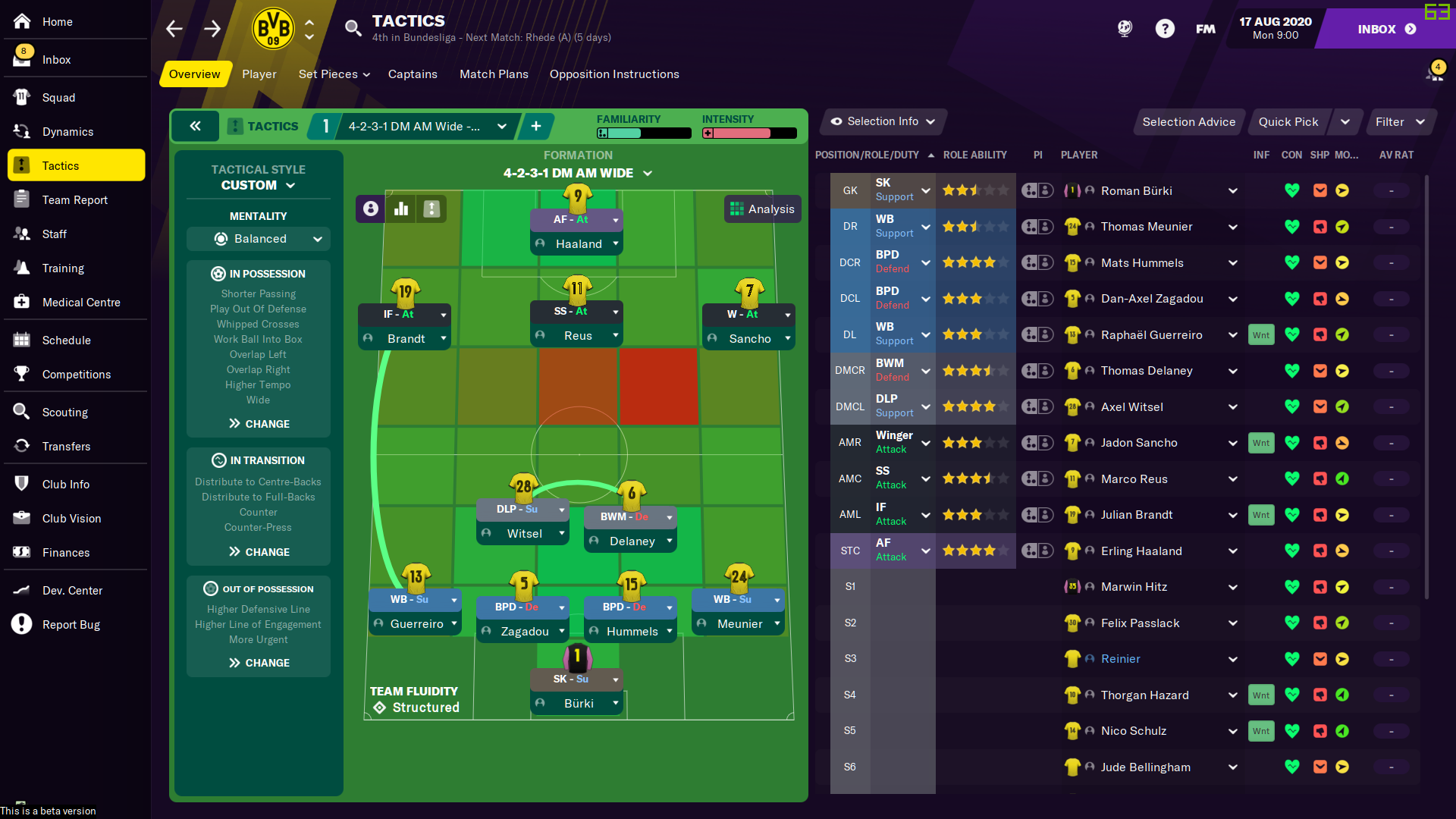
Okay, here is a 1200-word article in English about football match tempo analysis.
The Rhythmic Art of Victory: Unveiling Football Match Tempo Analysis
Football, often dubbed "the beautiful game," is a symphony of motion, skill, and strategy. While goals, dazzling dribbles, and last-ditch tackles often capture the headlines, an equally crucial, yet often less explicitly discussed, element dictates the ebb and flow of a match: tempo. Tempo, in the context of football, is far more nuanced than mere physical speed; it encompasses the collective pace of play, the speed of decision-making, the intensity of movement, and the rhythm of ball circulation. Understanding, measuring, and strategically manipulating match tempo is a sophisticated art and science that can unlock tactical advantages, optimize player performance, and ultimately, determine the outcome of a game.
This article delves into the intricate world of football match tempo analysis, exploring its definition, the various facets it encompasses, the methodologies used for its measurement, the myriad factors influencing its fluctuations, and its profound strategic importance for coaches, players, and analysts alike.
I. Defining Tempo: Beyond Just Speed
At its core, tempo refers to the speed and intensity at which a game is played. However, this definition is multi-layered:
-
Physical Tempo: This is the most intuitive aspect, relating to the physical exertion of players. It includes the frequency and intensity of sprints, accelerations, decelerations, changes of direction, and overall distance covered at high speeds. A high physical tempo implies a physically demanding game, often characterized by intense pressing and rapid transitions.
-
Tactical Tempo: This refers to the speed of ball circulation and decision-making. A team playing with high tactical tempo moves the ball quickly, makes rapid decisions about passing options, and transitions swiftly between attack and defense. Conversely, a slow tactical tempo might involve more deliberate build-up play, holding possession, and waiting for openings.
-
Psychological Tempo: This less tangible aspect relates to the mental state and urgency of the players. A team confident and in control might dictate a calm, deliberate tempo, while a team chasing the game might exhibit a frantic, high-urgency psychological tempo. This influences both physical and tactical execution.
Crucially, these three aspects are interconnected. A team aiming for a high tactical tempo will inevitably demand a high physical tempo from its players, who must constantly be in position to receive or press. Similarly, psychological states can either accelerate or stifle the execution of both physical and tactical intentions.
II. The Multifaceted Nature of Tempo Fluctuations
Football matches are rarely played at a constant tempo. They are dynamic entities, constantly shifting rhythms in response to a multitude of internal and external factors. Understanding these fluctuations is key to effective analysis.
Internal Factors:
- Scoreline: A team leading by a comfortable margin might naturally drop its tempo, looking to conserve energy, control possession, and limit risk. Conversely, a team trailing will almost invariably increase its tempo, playing with greater urgency, taking more risks, and pressing higher to win the ball back.
- Player Fatigue: As a match progresses, individual and collective player fatigue sets in. This naturally leads to a decrease in physical tempo, impacting sprinting ability, decision-making speed, and defensive recovery. Substitutions are often made to inject fresh legs and reignite tempo.
- Tactical Directives: Coaches explicitly instruct players to vary tempo. A team might start with a high-intensity press to overwhelm an opponent, then drop to a more conservative, lower-tempo defensive block. Similarly, an offensive strategy might involve slow, patient build-up to draw opponents out, followed by sudden bursts of high-tempo attacking play.
- Player Roles and Qualities: Certain players are tempo-setters. A deep-lying playmaker might dictate a slower, controlled tempo with precise short passes, while a dynamic winger or striker might inherently inject bursts of high tempo through their dribbling and runs.
External Factors:
- Opponent’s Style: A team facing a high-pressing opponent might be forced into a quicker, higher-tempo game to avoid losing possession. Conversely, playing against a low-block defense might necessitate a more patient, lower-tempo build-up to find gaps.
- Pitch Conditions: A heavy, waterlogged pitch can significantly reduce the physical and tactical tempo of a game, making quick ball movement and rapid changes of direction more challenging.
- Weather: Extreme heat or cold can impact player endurance and willingness to maintain high physical tempo.
- Refereeing: A referee who frequently stops play for fouls or trivial incidents will inevitably disrupt the flow and tempo of a game, leading to a more stop-start rhythm.
III. Measuring and Quantifying Tempo: The Data Revolution
Historically, tempo analysis was largely subjective, relying on the astute observations of coaches and scouts. While experienced eyes remain invaluable, modern football has been revolutionized by data and technology, allowing for increasingly precise and objective measurement of tempo.
-
GPS and Wearable Technology: Players wear devices that track their movement patterns throughout a match. Key metrics include:
- Total Distance Covered: Overall workload.
- Distance Covered in High-Speed Zones (e.g., >20 km/h): Indicates periods of high physical exertion.
- Number of Sprints, Accelerations, Decelerations: Quantifies explosive efforts.
- Metabolic Power/Work Rate: A more sophisticated measure of energy expenditure.
These metrics provide a clear picture of physical tempo fluctuations over time and can highlight periods of high intensity or fatigue.
-
Optical Tracking Systems: Cameras positioned around the stadium track the precise location of every player and the ball multiple times per second. This generates a wealth of spatial-temporal data, enabling analysis of:
- Ball Speed and Trajectory: Measures tactical tempo.
- Player Spacing and Compactness: How quickly a team contracts or expands defensively/offensively.
- Team Speed of Movement (e.g., meters per second for defensive line shifts): Quantifies tactical adjustments.
- Pressing Intensity (e.g., PPDA – Passes Per Defensive Action): A low PPDA indicates a high-intensity press, thus a high defensive tempo.
- Possession Chains and Passing Networks: Analyzing the speed and complexity of ball circulation.
-
Event Data: Recorded by human analysts or AI, this data captures every significant event in a match (passes, shots, tackles, interceptions, fouls, etc.). While not directly measuring movement, event data can infer tempo:
- Number of Passes per Minute: A higher rate often indicates a faster tactical tempo.
- Time in Possession per Sequence: Shorter possession sequences might suggest a more direct, higher-tempo approach.
- Number of Defensive Actions (Tackles, Interceptions, Blocks): High numbers can indicate a high defensive tempo.
-
Integrated Platforms and AI: Modern analytical platforms combine data from all these sources. Artificial intelligence and machine learning algorithms are increasingly used to identify complex tempo patterns, predict future shifts, and even suggest optimal tempo strategies based on game state and opponent characteristics. This allows for a holistic view, moving beyond isolated metrics to understand the intricate interplay of physical, tactical, and psychological elements.
IV. The Strategic Importance of Tempo Analysis
The detailed analysis of match tempo is not merely an academic exercise; it is a vital component of modern football strategy and performance optimization.
-
Match Preparation and Scouting:
- Opponent Profiling: By analyzing an opponent’s historical tempo patterns (e.g., do they start fast and fade? Do they employ different tempos home vs. away?), coaches can anticipate their approach and prepare their team accordingly.
- Tactical Planning: A team might decide to impose a high tempo from the start to overwhelm a technically superior but physically less robust opponent, or conversely, adopt a slower tempo to frustrate a high-pressing team and conserve energy.
-
In-Game Management:
- Real-time Adjustments: Analysts feeding live tempo data to the coaching staff can inform crucial in-game decisions. If a team’s physical tempo is dropping unexpectedly, it might signal fatigue requiring substitutions or a tactical shift to a less physically demanding approach. If the opponent’s tempo is rising, countermeasures can be planned.
- Momentum Control: Recognizing shifts in momentum, often driven by tempo changes, allows coaches to make tactical tweaks (e.g., bringing on a fresh attacker to exploit a tiring defense, or a defensive midfielder to slow the game down).
-
Player Performance and Development:
- Workload Management: Tempo data helps monitor player load, reducing the risk of injury and optimizing recovery.
- Individual Performance Evaluation: Analysts can assess how well individual players adhere to the team’s desired tempo, identify players who consistently dictate or disrupt tempo, and pinpoint areas for improvement (e.g., decision-making under pressure, physical conditioning for sustained high intensity).
- Training Design: Training sessions can be designed to mimic specific match tempos, preparing players for the demands of different game scenarios.
-
Post-Match Analysis:
- Performance Review: Evaluating how well the team executed its planned tempo strategy and identifying deviations.
- Learning and Adaptation: Using tempo data to refine future tactical approaches and training methodologies.
V. Practical Applications and Tactical Adaptations
Tempo analysis directly translates into actionable tactical strategies:
- Offensive Tempo Variation: A team might employ a slow, patient build-up to draw the opponent out of their defensive shape, then suddenly accelerate the tempo with quick, incisive passes and runs to exploit the newly created spaces. This "change of pace" is incredibly difficult to defend against.
- Defensive Tempo Imposition: A high-pressing team aims to dictate a relentlessly high defensive tempo, suffocating the opponent’s build-up and forcing errors. Conversely, a team might opt for a lower defensive tempo, dropping into a compact low block to deny space and then patiently waiting for counter-attacking opportunities.
- Transition Tempo: The speed at which a team transitions from defense to attack (and vice versa) is a critical component of tempo. High-tempo transitions can catch opponents off guard and create numerical advantages.
- Game Management: When leading, a team might intentionally slow the tempo by holding possession, playing more short passes, and taking longer over set pieces to frustrate the opponent and run down the clock. When chasing, the tempo must be increased dramatically, often involving more direct play, long balls, and aggressive pressing.
VI. Challenges and Future Directions
Despite its immense value, tempo analysis presents challenges. Data overload can be an issue, requiring skilled analysts to distill meaningful insights from vast datasets. Context is paramount; a high sprint count in one scenario might be beneficial, while in another, it could indicate disorganized play. Integrating complex data insights seamlessly into a coach’s intuitive decision-making process also requires effective communication and trust.
The future of tempo analysis is bright. Expect even more sophisticated AI models capable of real-time predictive analytics, identifying optimal tempo strategies based on live game events and player fatigue levels. Personalized tempo profiles for each player will become standard, informing bespoke training regimens. Virtual reality and augmented reality could allow players to train in simulated match environments, practicing decision-making at different tempos. As technology advances, the "rhythmic art" of football will become even more precisely quantified, allowing teams to orchestrate their performances with unparalleled precision.
Conclusion
Tempo is the unseen conductor of the football orchestra, dictating the rhythm, intensity, and overall flow of the game. It is a complex interplay of physical exertion, tactical execution, and psychological states. With the advent of advanced data analytics and tracking technologies, what was once a subjective observation is now a quantifiable and strategically manipulable dimension of performance.
Understanding and mastering tempo analysis empowers coaches to craft more effective game plans, manage player resources optimally, and make crucial in-game adjustments. For players, it provides a deeper understanding of the demands of the game and areas for personal development. In the relentless pursuit of victory, the ability to read, influence, and exploit match tempo is no longer a luxury but a fundamental cornerstone of success in modern football. It truly is the rhythmic art that underpins the beautiful game.



